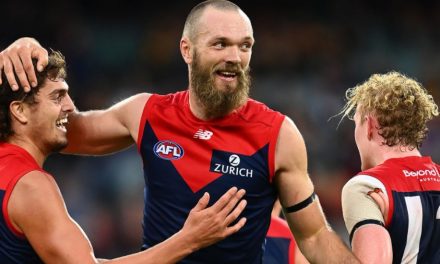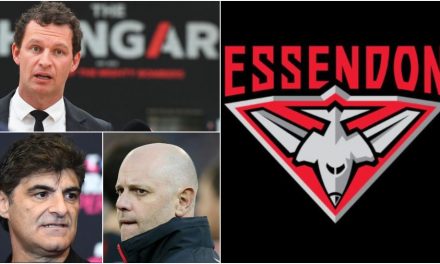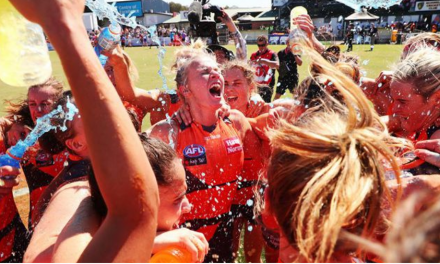(Left to right): Jack Watts, Steven Motlop and Tom Rockliff’s additions bring Port Adelaide’s “foreign legion” to a dozen. Photos: GETTY IMAGES
Passing parade of players might just end in a premiership
Even the keenest Port Adelaide supporters are going to be spending a bit more time than usual this pre-season putting names to numbers, let alone those with a passing interest in the Power.
Football has seen the odd squad of imports dubbed a “foreign legion” before, but seldom on the scale of Port’s latest recruiting spree.
Weeks out from the national draft, the Power have opted for the used car instead of the shiny new model, and not just the one.
Tom Rockliff was the first to come aboard via free agency, Jack Watts and Steven Motlop were picked up in the trade period, and now Trent McKenzie, Jack Trengove and perhaps Lindsay Thomas will join them as delisted free agents.
They will join Charlie Dixon, Brad Ebert, Jack Hombsch, Jared Polec, Paddy Ryder and Jimmy Toumpas as Port Adelaide players who made their AFL debuts at another club. That’s a dozen altogether, nearly one-third of the Power’s entire list.
Carlton had 14 such players in 2017 and Collingwood a dozen. And the Blues have set new standards in turning over their list. Since Brendon Bolton’s arrival as coach, no fewer than 42 players in just three years have been turned over.
The player merry-go-round wouldn’t have happened a decade, perhaps even five years ago. But increasingly, AFL clubs can see their potential premiership window not as some vague “five-year plan”, but now.
They haven’t necessarily got the time to invest in talent but raw teenagers from the junior ranks who will take several years to acquire all the physical and psychological tools required to be consistent AFL performers.
And the result is that football hasn’t ever seen player movement on this scale, even before the days of the draft and salary cap.
It’s been a revolution of sorts, but one which has crept up on the game via not only more mechanisms of movement, but the tangible evidence that these days no club is too far away from a potential flag assault.
Why shouldn’t clubs sniff a chance? Newly-crowned premier Richmond came from 13th place to win its first premiership in 37 years. Two seasons before the Western Bulldogs won their first since 1954, they had finished 14th.
Senior lists are being turned over more quickly than before and through a range of recruiting sources far beyond just the best talent out of the TAC under 18 competition.
The introduction of free agency was just the start, simultaneously encouraging other players to explore their options for more opportunities on better deals. Competitions beyond the AFL-controlled under 18s are being mined more thoroughly for talent.
And those players given the flick by their original clubs are no longer just dismissed as “rejects”. In fact, this year’s crop may be the best collection of talent cut from AFL lists we’ve yet seen.
Once being delisted by a club appeared a virtual death sentence for an AFL career. Now there’s a recognition that not making it initially doesn’t have to be simply a case of “not good enough”, but perhaps about other factors, positions, game style, player type, relationships, even just luck.
Joel Hamling never cracked a single game for Geelong, was delisted, and played in a Bulldogs’ premiership, three years after Jonathan Simpkin took a similar path to being part of a Hawthorn flag.
And serviceable players at one club can become, via the trade period, key members of the best 22 elsewhere. Take, for instance, the additions to Richmond’s blend in Dion Prestia, Josh Caddy and Toby Nankervis, now all premiership players.
While Gold Coast never wanted to lose Prestia, Caddy had become at Geelong stuck behind superstars in Patrick Dangerfield and Joel Selwood when it came to the need for a big-bodied midfield bull.
Nankervis, meanwhile, faced an even longer queue for a ruck spot at Sydney behind Kurt Tippett, Sam Naismith and Callum Sinclair. Instead, with veteran Ivan Maric on the way out at Punt Road, Nankervis became a critical part of the Tigers’ midfield and on-ball operations.
Richmond’s premiership side had six players in total who’d come from elsewhere, Shaun Grigg, Bachar Houli and Jacob Townsend the others.
It’s a far cry from the list core which Geelong and Hawthorn both built from the national draft to win flags from 2007-2011, supplemented only here and there with the odd needs-based pick-up from a rival.
No premiership team over that period contained any more than three players who had made their AFL debuts elsewhere. Indeed, Geelong in 2011 had just one. But Sydney in 2012 had half-a-dozen imports – Josh Kennedy, Martin Mattner, Mitch Morton, Shane Mumford, Ted Richards and Rhyce Shaw.
By the time Hawthorn backed up its 2008 premiership in 2013, the Hawks’ recruiting philosophy had changed. They had seven – Simpkin, Shaun Burgoyne, Josh Gibson, Brent Guerra, Jack Gunston, David Hale and Brian Lake.
Since Geelong won in 2011, only one premiership team has contained fewer than six players hailing from another AFL club. And football being the slave to fashion it is, that’s a trend that is unlikely to cease any time soon.
Why should it? It clearly works. And it doesn’t mean clubs have to forego the ranks of junior football altogether. They can still target then develop a smaller group of more elite under 18 kids for the longer term, whilst still having the cattle to leave a meaningful imprint on the here and now.
Fans often decry the lack of player loyalty in the modern era and the passing parade of players they watch run out in their team’s jumpers each season.
But given a choice between the same old faces and same old story, or a more changeable cast of characters and with them a more realistic chance of achieving something substantial, which would they prefer? And if you don’t think the answer is obvious, ask Richmond fans what they think.
*This article first appeared at SPORTING NEWS AUSTRALIA











